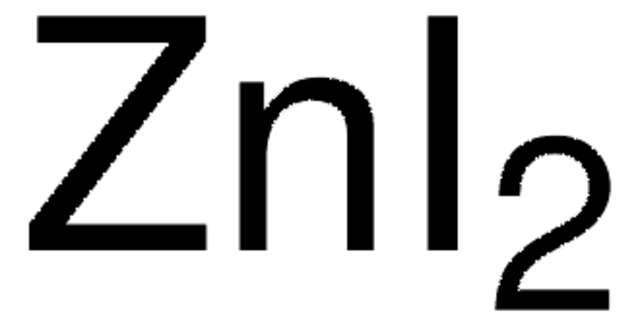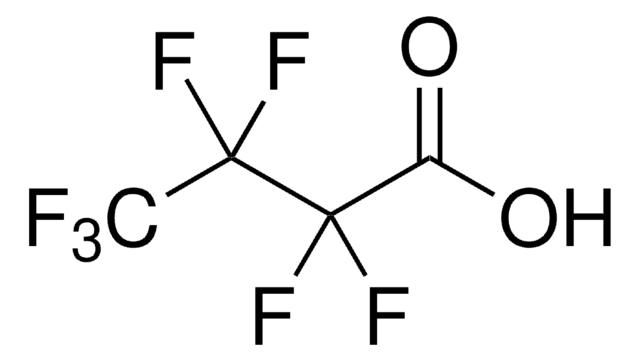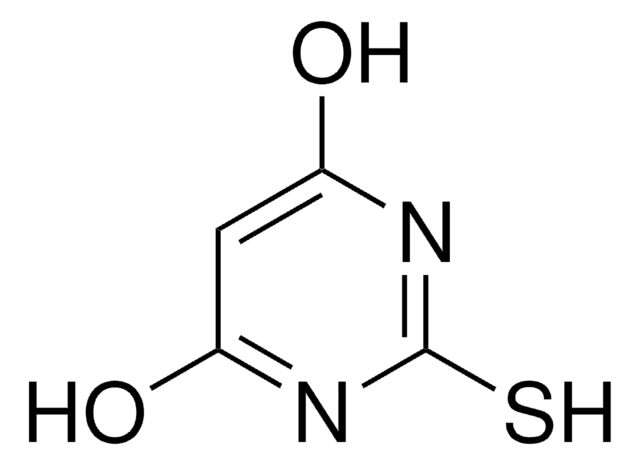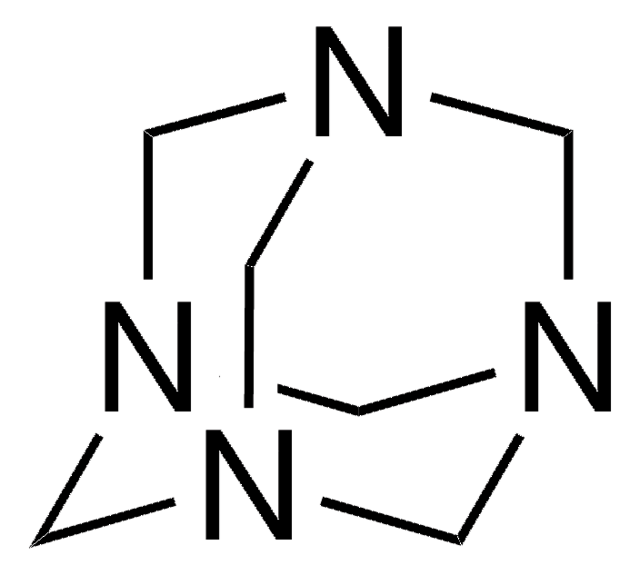96483
Zinc iodide
purum p.a., ≥98.0% (AT)
Synonyme(s) :
Diiodozinc, Zinc diiodide
About This Item
Produits recommandés
Qualité
purum p.a.
Essai
≥98.0% (AT)
Forme
powder or crystals
Pf
445 °C (lit.)
Densité
4.74 g/mL at 25 °C (lit.)
Traces d'anions
sulfate (SO42-): ≤500 mg/kg
Traces de cations
Ca: ≤500 mg/kg
Cd: ≤200 mg/kg
Co: ≤50 mg/kg
Cu: ≤50 mg/kg
Fe: ≤100 mg/kg
K: ≤500 mg/kg
Na: ≤500 mg/kg
Ni: ≤50 mg/kg
Pb: ≤50 mg/kg
Chaîne SMILES
I[Zn]I
InChI
1S/2HI.Zn/h2*1H;/q;;+2/p-2
Clé InChI
UAYWVJHJZHQCIE-UHFFFAOYSA-L
Vous recherchez des produits similaires ? Visite Guide de comparaison des produits
Catégories apparentées
Description générale
Application
- As a catalyst for one-pot synthesis of aminoindolizines via sequential A3 coupling/cycloisomerization.
- As a catalyst for one-pot synthesis of quinoxalines.
- As a precursor to synthesize highly luminescent quantum dots.
- As a redox electrolyte in hybrid energy storage systems.
- As a dopant to prepare highly flexible PVA composite films. The addition of zinc iodide enhances the optoelectronic properties of polymer composite.
Mention d'avertissement
Warning
Mentions de danger
Conseils de prudence
Classification des risques
Aquatic Acute 1 - Aquatic Chronic 1 - Eye Irrit. 2 - Skin Irrit. 2 - STOT RE 2 Oral
Organes cibles
Thyroid
Code de la classe de stockage
13 - Non Combustible Solids
Classe de danger pour l'eau (WGK)
WGK 3
Point d'éclair (°F)
Not applicable
Point d'éclair (°C)
Not applicable
Équipement de protection individuelle
Eyeshields, Faceshields, Gloves, type P3 (EN 143) respirator cartridges
Faites votre choix parmi les versions les plus récentes :
Déjà en possession de ce produit ?
Retrouvez la documentation relative aux produits que vous avez récemment achetés dans la Bibliothèque de documents.
Notre équipe de scientifiques dispose d'une expérience dans tous les secteurs de la recherche, notamment en sciences de la vie, science des matériaux, synthèse chimique, chromatographie, analyse et dans de nombreux autres domaines..
Contacter notre Service technique









